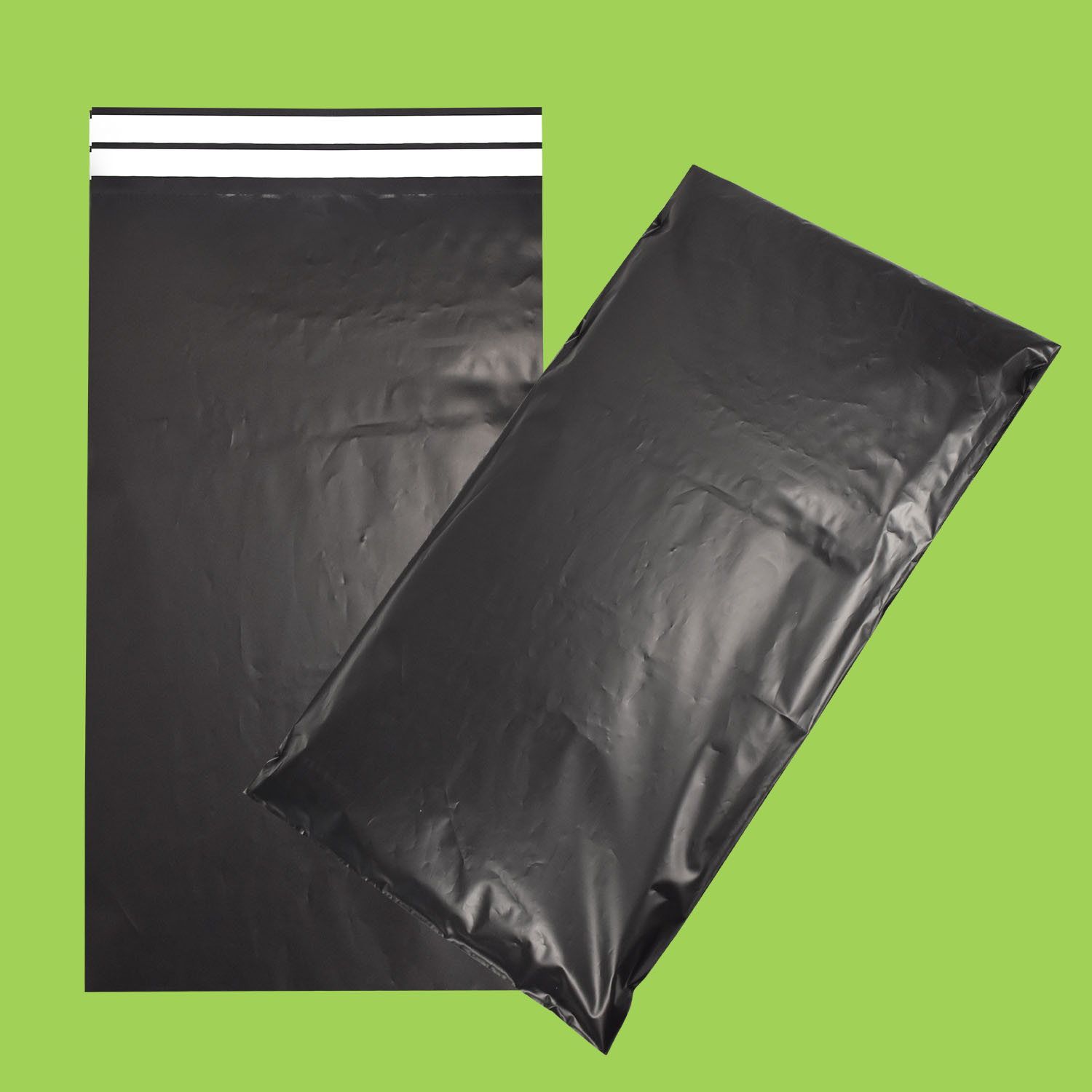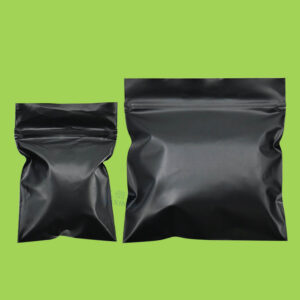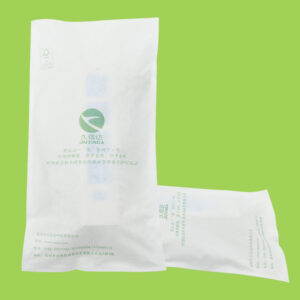Although compostable bags and biodegradable bags are similar in name, there are some key differences between them:
- Differences in definition:
Compostable bags refer to products or materials that can be decomposed by microorganisms in a specific human-controlled environment, such as a commercial composting facility. This process requires human intervention, such as providing water, oxygen and organic matter, and usually takes several months to three years.
Biodegradable bags refer to materials that can be decomposed by microorganisms in the natural environment. Biodegradation is a natural process that can occur under aerobic or anaerobic conditions, but it takes less time under aerobic conditions. - Degradation conditions:
Compostable bags need to be in industrial composting facilities, which can provide suitable temperature, humidity and oxygen conditions to accelerate the degradation process.
The degradation process of biodegradable bags can occur in a wider range of environments, including soil, fresh water, seawater and other environments, but the specific degradation time will be affected by environmental conditions. - Labeling and certification:
Compostable bags usually have clear labels, such as the “double J” logo, as well as information such as the material, degradation environment conditions, product standard number and product name.
The labels of biodegradable bags may be more diverse, and some products may only be marked “biodegradable” without detailing the specific degradation conditions or environment. - Market and regulation:
The production and use of compostable bags are subject to stricter supervision and need to comply with specific national standards and certification requirements, such as GB/T 41010-2021 “Degradation Performance and Labeling Requirements for Biodegradable Plastics and Products”.
There may be more inconsistencies in the biodegradable bag market, including different standards and labels, and some products may only partially biodegrade or degrade under specific conditions. - Environmental impact:
Compostable bags, if handled correctly, can be converted into organic fertilizers, which have a positive impact on the environment.
If biodegradable bags end up in landfills or natural environments, they may not degrade for a long time due to the lack of suitable degradation conditions, causing potential negative impacts on the environment.
Although both compostable bags and biodegradable bags can be decomposed by microorganisms under certain conditions, their degradation environments, speeds and regulatory requirements are different. When choosing these products, consumers should carefully check the product labels to understand the specific degradation conditions and ensure that they can be handled in an appropriate environment.
What are compostable bags?
Compostable bags refer to products or materials that can be decomposed by microorganisms under specific artificially controlled environments, such as commercial composting facilities. Here are some key features of compostable bags:
- Definition: Compostable bags are designed to decompose during the composting process, and they are usually made of materials that can be digested by microorganisms.
- Materials: These bags are usually made of bio-based materials, such as polylactic acid (PLA), polyhydroxyalkanoates (PHA), or starch-based materials, which can be decomposed by microorganisms under composting conditions.
- Degradation conditions: Unlike natural biodegradation, the degradation of compostable bags requires specific conditions, including sufficient moisture, oxygen, and suitable temperature, which are usually achieved in industrial composting facilities.
- Labeling: Compostable bags should have clear labels indicating that they can be decomposed under composting conditions. These labels may include specific graphic logos and text descriptions, such as “suitable for industrial composting” or “home compostable”.
- Certification: Some compostable bags may have third-party certification, such as the US Biodegradable Products Institute (BPI), which indicates that the product has passed rigorous testing to ensure that they can decompose under composting conditions.
- Environmental impact: If handled correctly, compostable bags can be converted into organic fertilizer, reduce the amount of landfill, and have a positive impact on the environment.
- Precautions for use: Although compostable bags are designed for composting, if they are improperly handled, such as being thrown into landfills or the natural environment, they may not decompose, causing potential negative impacts on the environment.
- Standards: Different countries and regions may have different standards to define and regulate the production and use of compostable bags, such as China’s GB/T 41010-2021 “Biodegradable Plastics and Products Degradability and Labeling Requirements”.
Compostable bags are an environmentally friendly product designed to reduce the impact of traditional plastics on the environment, but their environmental benefits depend largely on whether they can be composted under appropriate conditions.
What is a biodegradable bag?
Biodegradable bags are plastic products designed to be decomposed by microorganisms in the natural environment. Here are some key features of biodegradable bags:
- Definition: Biodegradable bags are bags that can be decomposed into simple components such as water, carbon dioxide and biomass under the action of microorganisms. This decomposition process is part of the biological cycle in nature.
- Materials: Biodegradable bags are usually made of bio-based materials such as polylactic acid (PLA), polyhydroxyalkanoate (PHA), polybutylene succinate (PBAT) or starch-based materials.
- Degradation conditions: The decomposition process of biodegradable bags can occur in a variety of environments, including soil, fresh water, sea water, compost, etc., but the decomposition rate will be affected by environmental conditions such as temperature, humidity, oxygen supply and other factors.
- Labeling: Biodegradable bags should have clear labels indicating that they are biodegradable. These labels may include specific graphic logos and text descriptions such as “biodegradable” or “suitable for biodegradation”.
- Certification: Some biodegradable bags may have third-party certifications, such as DIN CERTCO, EN 13432, or ASTM D6400, which indicate that the products have passed rigorous testing to ensure that they can biodegrade under specific conditions.
- Environmental impact: Biodegradable bags are designed to reduce the impact of traditional plastics on the environment, and if they can decompose under the right conditions, they can reduce the accumulation of plastic waste.
- Precautions for use: Biodegradable bags need specific environmental conditions to decompose effectively. If they are improperly handled, such as being thrown into a landfill, they may not decompose due to the lack of sufficient oxygen and microorganisms there, causing potential negative impacts on the environment.
- Standards: Different countries and regions may have different standards to define and regulate the production and use of biodegradable bags. For example, the European Union has the EN 13432 standard for biodegradable plastics.
- Market and regulation: There may be inconsistencies in the biodegradable bag market, including different standards and logos, and some products may only partially biodegrade or degrade under specific conditions. Therefore, consumers should carefully check product logos and certifications when choosing these products.
Biodegradable bags are plastic products designed to decompose in the natural environment. They can serve as an environmentally friendly alternative to traditional plastics, but their environmental benefits largely depend on whether they can decompose under the right conditions.





